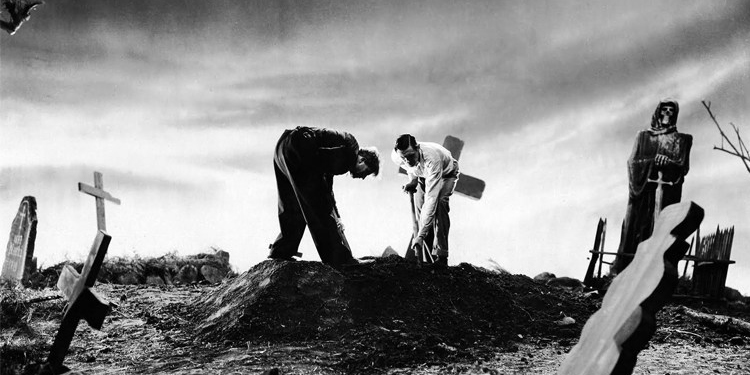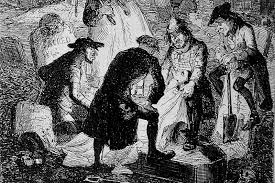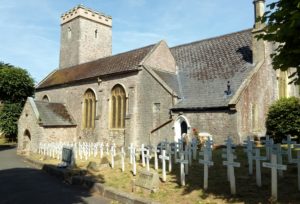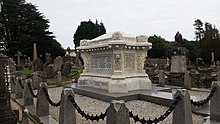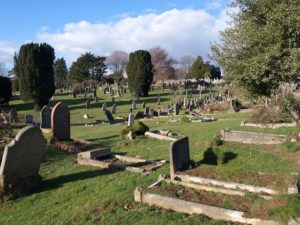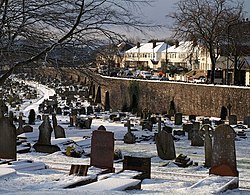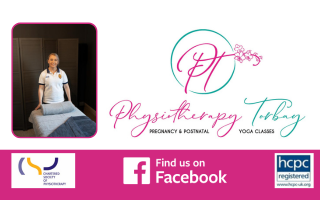Young folk growing up in Torquay were often told stories of body snatchers in Torquay Cemetery.
There’s also a specific tale of the Cemetery’s grave diggers who illicitly dug up a recently buried woman’s corpse to steal her jewellery. The story was that her fingers came off with the rings. This scared the robbers and they fled, but they had bad luck for the rest of their lives.
So, is there any truth in these legends?
First of all a similar tale of nocturnal ring thieves occurs in Colonial America and appears to have been brought there by Irish and Scottish immigrants. In Devon we also have Jay’s Grave where interfering with the flowers on the grave brings dire consequences.
But grave robbery certainly was a problem in the nineteenth century. We even have a grave robber’s diaries as evidence. Joseph Naples was active in London and in August 1812 wrote: “Separated to look out, the party met at night…Willson, M & F Bartholm, me, Jack and Hollis went to Islington. Could not succeed, the dogs flew at us, afterwards went to St Pancras, found a watch planted, came home.”
And there was the well-known account of Margaret Halcro who ‘died’ in 1725. She was buried at Scotland Wells along with a valuable ring on her finger. The village sexton decided to retrieve the ring, later exhumed the ‘corpse’ and attempted to amputate the finger. At this point Margaret awoke with a piercing shriek.
But there doesn’t appear to be any reports of grave robbery in Torquay. One reason may be the penalties of being caught – as a felony, grave robbery carried sentences such as transportation or even death.
Another possibility is that folk just weren’t buried with much worth stealing. There was a superstition that corpses shouldn’t be buried with their jewellery, or bad luck would befall the family. While it’s more likely that jewellery wasn’t buried to deter any aspiring grave robbers, there’s also a bit of an incentive for family members not to surrender valuable items to the red soils of the Bay.
A further lack of local burrowing thieves was that Torquay’s traditional burial grounds of St Saviour’s in Torre and at Upton were small and easily viewed from nearby properties.
On the other hand, our local legends are specifically set in Hele Cemetery which helps us date the supposed ring incident to after 1852.
Let’s look at when the Cemetery was opened. Both of Torquay’s graveyards of St Saviour’s and Upton were being overused by the mid-nineteenth century. Alongside obvious overcrowding and competition for space, old churchyards were also seen as a being source of ‘miasma’, a stench that was believed could poison local residents. Both of ours were in close proximity to people’s homes and roads and couldn’t be easily expanded.
A new much larger site was clearly needed and in February 1850 local residents petitioned for a prohibition on further burials at Upton. Accordingly, in 1852 sixteen acres of agricultural land, adjacent to brickworks and potteries, was purchased on high ground on the outskirts of town. This was near a place named after the Old English word for ‘hidden’ – Hele. The churchyard at Torre was finally closed to burials in 1895.
There have also stories of Resurrection Men operating in Torquay, though this is very unlikely. There just wasn’t the demand, and the dates just don’t tie up.
Body snatchers did, however, operate in other parts of the country. The Judgement of Death Act of 1823 saw the number of crimes punishable by death in Britain drop dramatically – before then we were hanging folk like crazy. As medical and anatomical schools were only legally allowed to dissect the bodies of those who had been condemned to death, this led to an extreme shortage. Accordingly, medical students and anatomists took matters into their own hands, stealing corpses for their own use or turning to so-called ‘Resurrection Men’, thieves who made their living by selling corpses or even murdering people to meet the demand.
In most instances this was a low-risk and lucrative crime. The stealing of a corpse was a misdemeanour in English law, which carried a fine and/or short term in prison. Accordingly, most body snatchers were careful only to remove the body from the grave, leaving the dead person’s clothing and jewellery untouched.
In 1832 the Anatomy Act was passed in an effort to prevent the flow of illegal corpses. This made all ‘unclaimed’ bodies available for study and dissection and so cadaver supplies increased to meet demand.
Hence, the days of money-making body snatching were between 1823 and 1832. The Torbay Hospital, Provident Dispensary and Eye Infirmary opened in 1844, while construction of the Higher Union Street Hospital started in 1850 with the first wing being completed in 1851. Hele Cemetery only opened in 1852. Therefore, there just wasn’t a need for a local Burke and Hare who, incidentally, murdered 16 Edinburgh folk back in 1828.
But from its very beginning, Torquay Cemetery just wasn’t a place open to plundering of any description.
This was a High Victorian garden cemetery established by a commercial organisation, The Torquay Extra Mural Cemetery Company. Known as Torquay Cemetery, or as Barton Road Cemetery, it became the town’s primary last resting place for locals and visitors.
The opening of Pere Lachaise Cemetery in Paris in 1815 had provided inspiration for our local cemetery designers. And so our necropolis was landscaped, with sweeping roads wide enough for carriages, and smaller paths for strolling. Careful planting of trees and architectural features were designed to impress and give the effect of a park, with our duel chapels taking the place of a country house.
It was also secure, the cemetery’s entrance being comprised of cast-iron carriage gates set in high stone walls near a lodge in the Tudor Gothic style. Accordingly, it was well maintained and policed. Local ne’er-do-wells would be unlikely to ever be found there… unlike these days…


